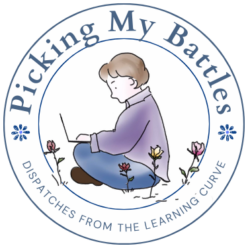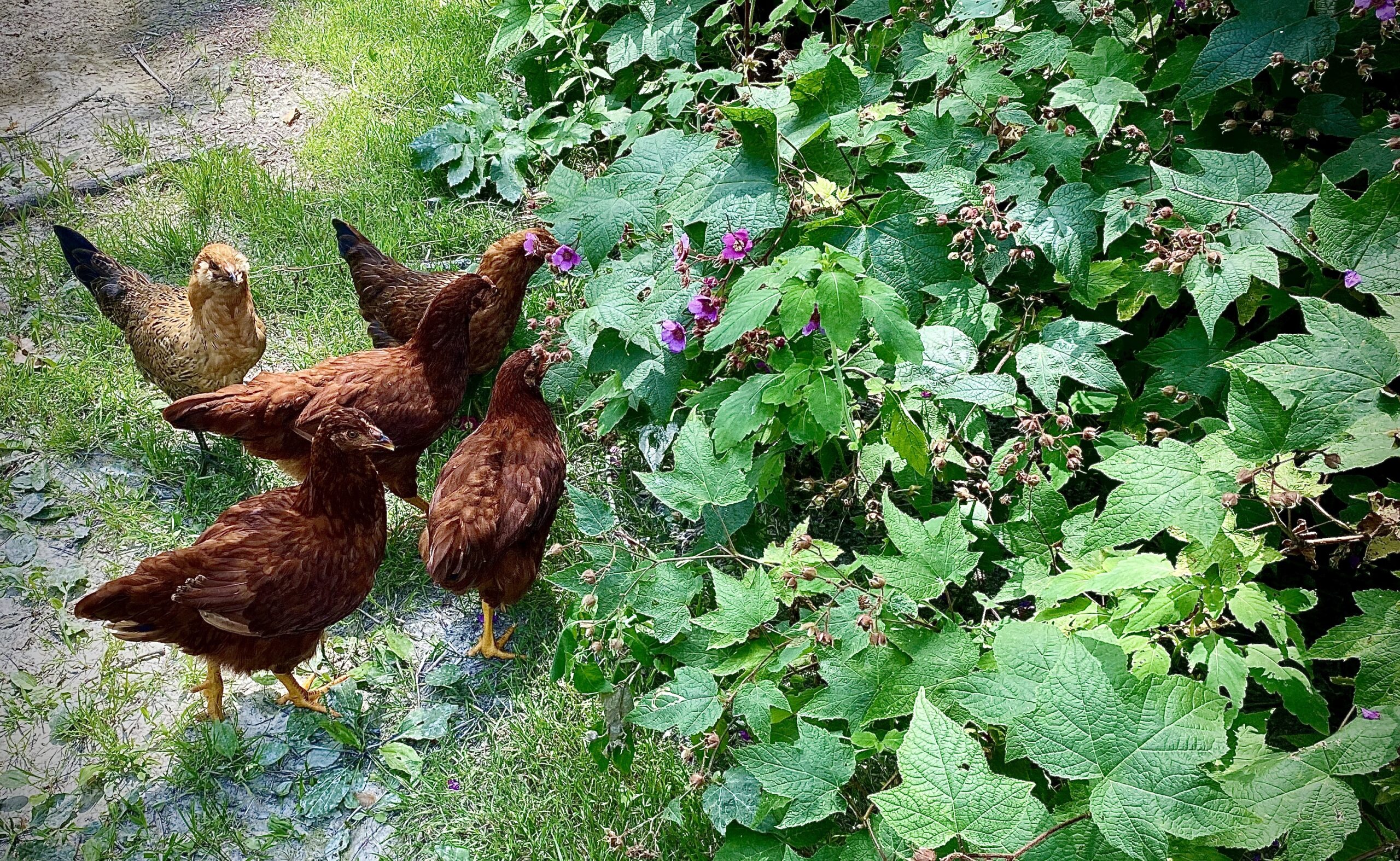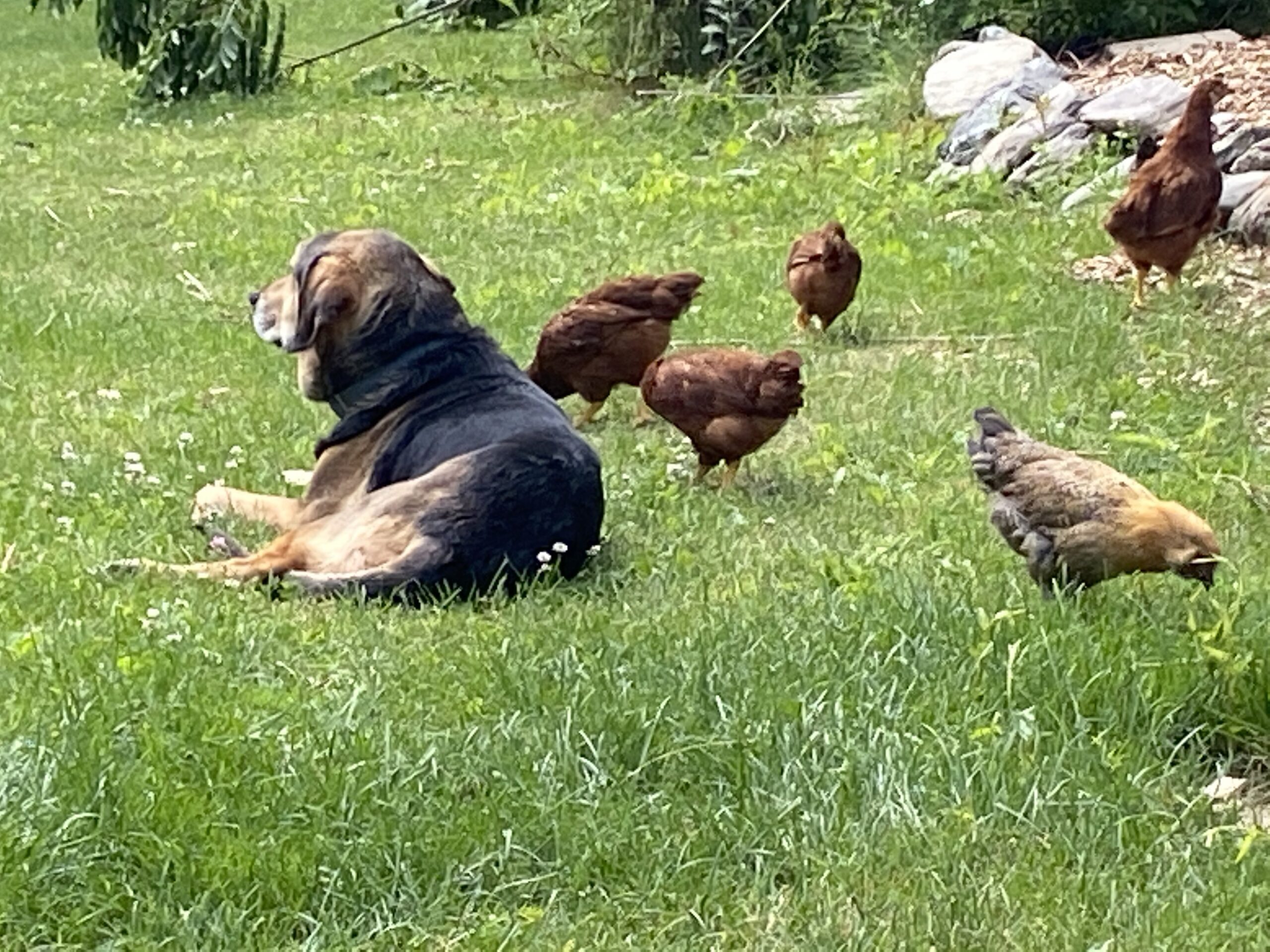I just finished my last online class the other day when I heard a piteous squawk outside my window. I thought it might be Gold who, always starved for human affection, spends much of her day pecking at my office window. I was about to open the window and tell her she couldn’t come in when I noticed that she, along with the rest ladies, was still in the chicken run that we had relocated to a garden bed near the house for the winter.
I went back to my desk and heard the squawk again. Then there was a peck. I got up and actually opened the slider this time.
Katy-the-Wonder-Dog was lollygagging in a sunny patch of snow (it was a balmy 35°), so I was pretty sure there weren’t any predators in the yard. One of the cats was sitting outside the chicken run gloating about his freedom. I looked the other way, and there was Joan Jett running back-and-forth in front of the house.
Back when we got the chickens, we named the Americaunas based on their personalities or distinguishing characteristics (The Reds, affectionate and incredibly productive, move as one and were harder to name). Fluffy had a silky mane. Golda had appropriately colored feathers, and one ornery, independent little chick with a shock of black feathers on the top of her head is named Joan Jett.
Joan likes to investigate the woods, my greenhouse and garden, and, often, the inside of my car, so I knew her distress was not fear. She trotted past my window and back to the run, pecking at her sisters through the hardware cloth, clearly incensed that They had chosen the first sunny warm day to ignore her bold leadership in breaking out of the run.
She hopped up on the top of the coop, so I went out and unceremoniously popped her back into the coop, checking to make sure she couldn’t sneak right back out again. She gave an outraged squawk as I closed door and scooted down the ramp to the enclosed run so she could, I’m certain, berate her sisters for ruining such a good escape plan.
When she got to the bottom of the ramp, however, she appeared to discover the perfect little sunny spot that must not have been there when she first decided to escape. I headed back to my office. She settled into her new spot, squawking at me and then her sisters one last time to make sure I knew that staying put was her idea and that she’s still one bad-ass chick, reminding me that just because you’re doing the same thing as the rest of the crowd, doesn’t mean you’re actually going along with it.





